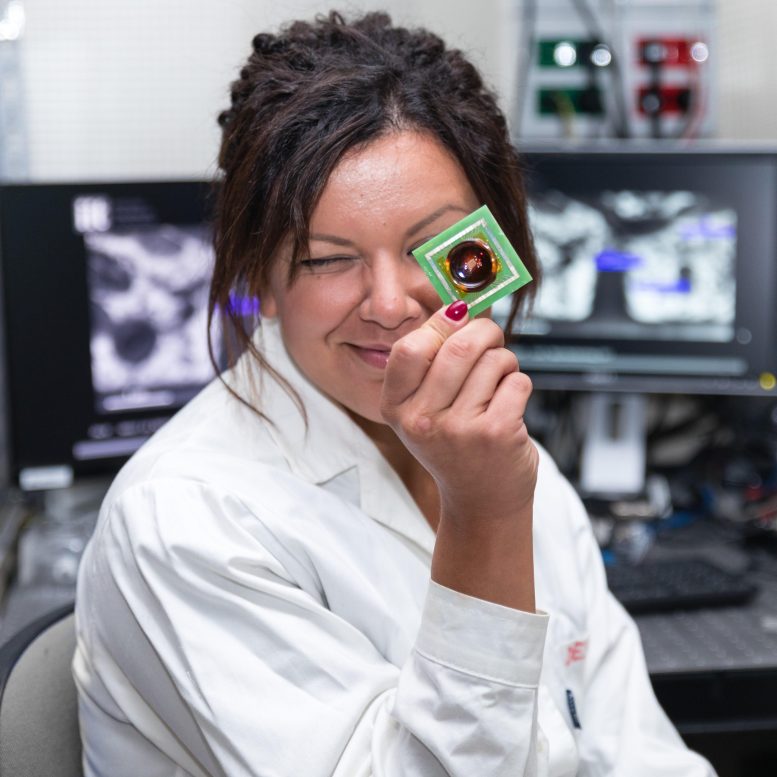
Scientists have created a biochip that replicates the retina, offering advancements in medical implants, neuron studies, and artificial intelligence. This flexible, organic semiconductor has potential applications in treating neurological disorders and improving computing efficiency.
A team of international researchers, led by Francesca Santoro from Jülich, has developed a biochip that imitates the human retina. This innovation is part of a broader effort in bioelectronics aimed at repairing bodily and brain dysfunctions. The creation of this chip is a collaborative achievement involving experts from Forschungszentrum Jülich, RWTH Aachen University, Istituto Italiano di Tecnologia, and the University of Naples. Their work and findings have been published in the journal
Versatile chip
What is exceptional about the new semiconductor is that it consists entirely of non-toxic organic components, is flexible, and works with ions, that is, with charged atoms or molecules. It can thus be integrated into biological systems much better than conventional semiconductor components made of silicon, which are rigid and only work with electrons. “Our body cells specifically use ions to control certain processes and exchange information,” explains the researcher. However, the development is, so far, only a “proof-of-concept”, she emphasizes. The material was synthesized and then characterized: “We were able to show that the typical properties of the retina can be imitated with it,” she says.

Prof. Francesca Santoro. Credit: Istituto Italiano di Tecnologia
The researchers are already thinking about another possible application: the chip could also function as an artificial SciTechDaily